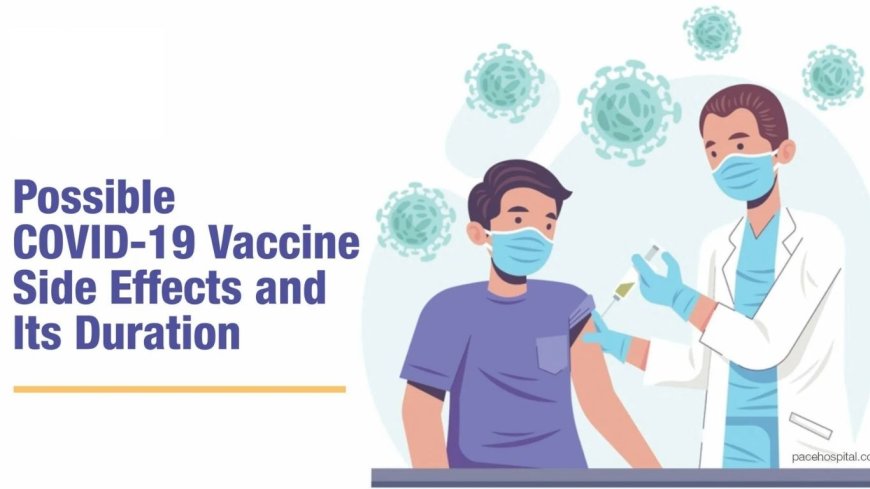COVID-19 Vaccine Side Effects

The global rollout of COVID-19 vaccines marked a turning point in the battle against the pandemic. While these vaccines have played a critical role in reducing hospitalizations and deaths, questions and concerns about their side effects remain common. Understanding the range, frequency, and severity of these side effects helps to provide clarity and reassurance to the public.
Understanding Vaccine Side Effects
COVID-19 vaccines, like all vaccines, can cause side effects. Most of these are mild and temporary, indicating that the body is building protection. Side effects may vary slightly depending on the vaccine type (Pfizer-BioNTech, Moderna, Johnson & Johnson, AstraZeneca, etc.), age group, and individual health status.
Vaccines trigger an immune response, and the side effects are generally a result of this process. They are usually short-lived, with most symptoms resolving within a few days.
Common Side Effects
Mild to Moderate Side Effects
The most frequently reported side effects occur within 48 hours of vaccination and typically resolve on their own. These include:
-
Pain or swelling at the injection site
-
Fatigue
-
Headache
-
Muscle aches
-
Fever
-
Chills
-
Joint pain
-
Nausea
These symptoms reflect a normal immune response and are no cause for alarm.
Severe or Rare Side Effects
Though extremely rare, some individuals may experience more serious side effects. These include:
-
Severe allergic reactions (anaphylaxis)
-
Myocarditis or pericarditis (more commonly observed in younger males after mRNA vaccines)
-
Blood clotting disorders (associated with viral vector vaccines like AstraZeneca and J&J)
-
Guillain-Barré Syndrome (GBS)
While rare, these events are monitored closely by health authorities worldwide, and guidance is continually updated based on emerging data.
Side Effects by Vaccine Type
Below is a table comparing side effects commonly reported with various vaccines:
| Vaccine | Common Side Effects | Rare Side Effects |
|---|---|---|
| Pfizer-BioNTech | Injection site pain, fatigue, headache, fever, chills | Myocarditis (especially in males under 30), anaphylaxis |
| Moderna | Injection site pain, muscle pain, chills, fatigue, joint pain | Myocarditis, pericarditis |
| Johnson & Johnson | Headache, fatigue, fever, muscle aches | Blood clots with low platelets (TTS), GBS |
| AstraZeneca | Fever, headache, muscle pain, chills, nausea | Blood clots with low platelets, GBS |
| Novavax | Injection site tenderness, fatigue, headache, muscle pain | Rare allergic reactions |
Tips to Manage Common Side Effects
Here are a few practical tips to manage common post-vaccine symptoms:
-
Rest – Give your body time to recover, especially if experiencing fatigue or fever.
-
Stay Hydrated – Drink plenty of fluids to help reduce fever and muscle aches.
-
Use Over-the-Counter Medications – Pain relievers like acetaminophen or ibuprofen can be taken to relieve symptoms unless contraindicated.
-
Cold Compress – Applying a cold compress to the injection site can reduce pain and swelling.
-
Monitor Symptoms – If symptoms persist beyond a few days or become severe, seek medical attention.
When to Seek Medical Help
While most side effects are mild, it’s important to know when to seek medical attention. Contact a healthcare provider if you experience:
-
Difficulty breathing
-
Swelling of the face or throat
-
Persistent high fever
-
Chest pain or palpitations
-
Severe headache or blurred vision
-
Unusual bruising or blood spots
Prompt medical evaluation ensures early intervention and safety.
Conclusion
COVID-19 vaccines have undergone rigorous clinical trials and continuous monitoring to ensure their safety and effectiveness. Most side effects are signs that the vaccine is working and that the immune system is responding appropriately. Serious side effects are rare and are typically outweighed by the benefits of vaccination, especially in preventing severe illness, hospitalization, and death.
By staying informed and consulting with healthcare professionals, individuals can make well-informed decisions about vaccination. As global vaccination efforts continue, understanding vaccine side effects remains an essential part of public health education.





























